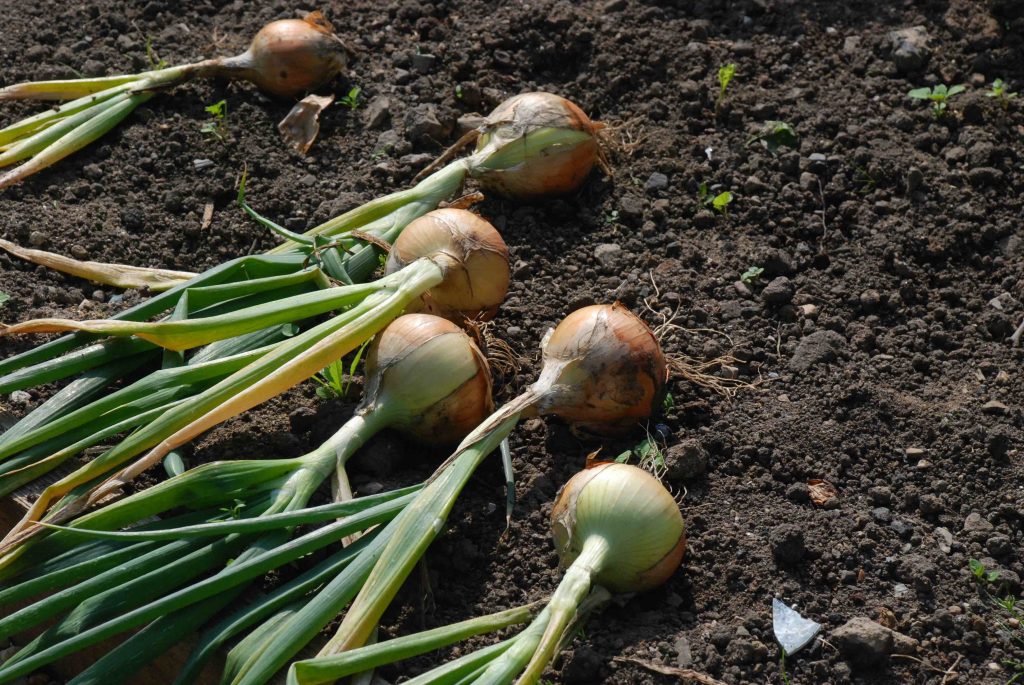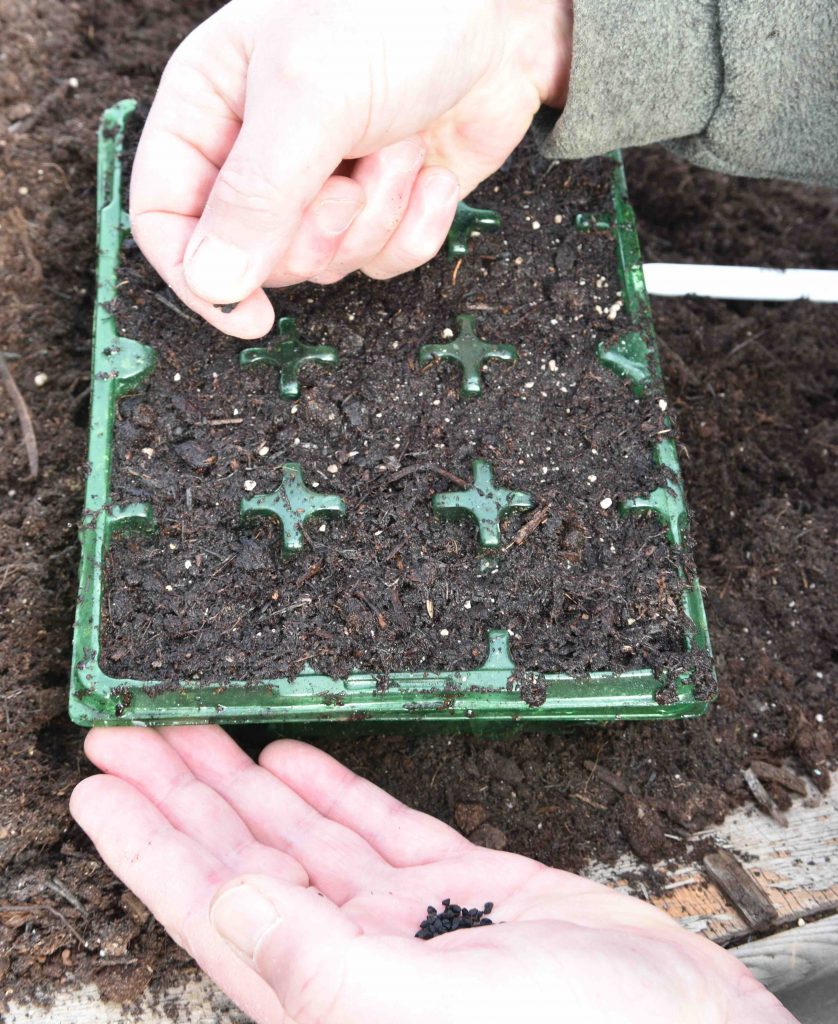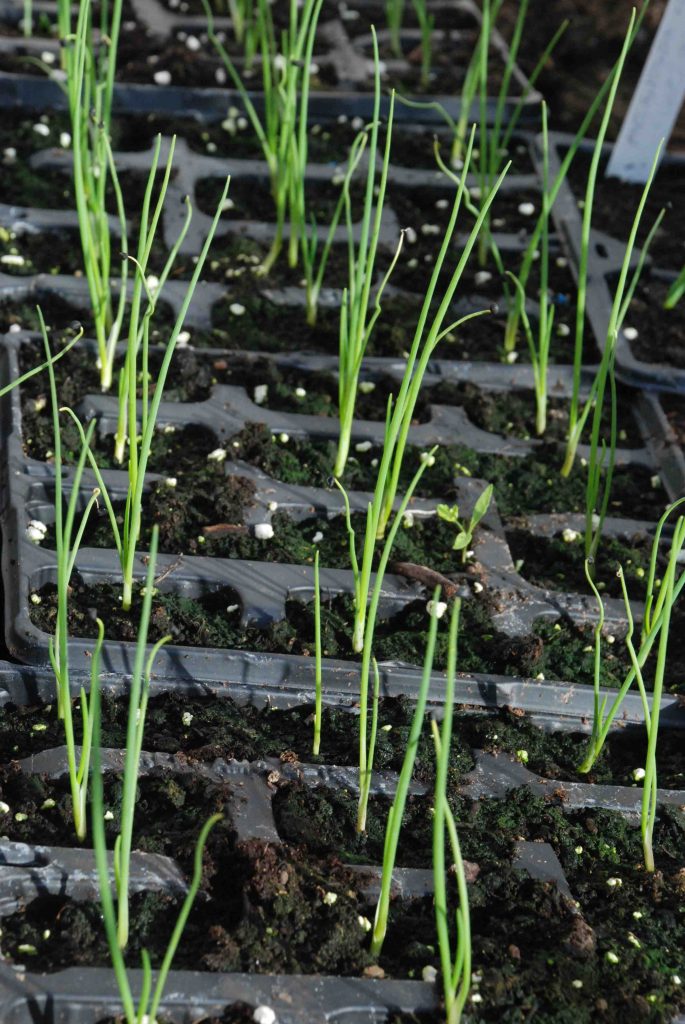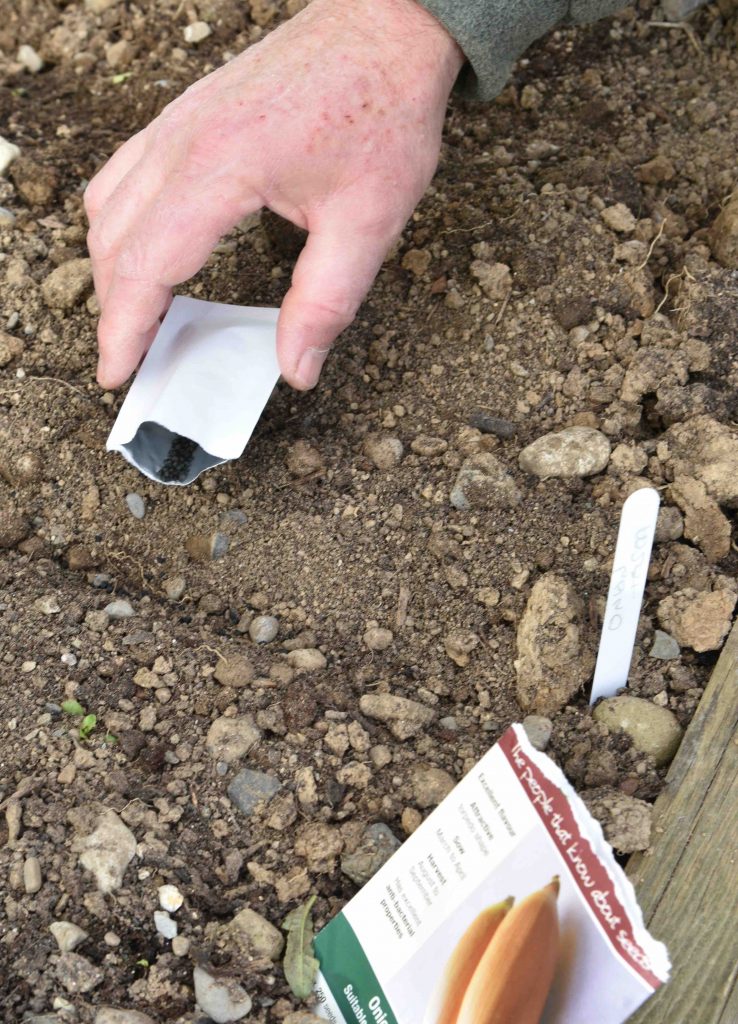
When it comes to growing your own veg I always think you should grow what you like to eat, followed by what you can’t buy in the shops. For this reason I grow quite a few unusual veg. Not all crops are suited to all gardens and, try as I might, I can’t really grow decent celery. I don’t always get to pick all the runner beans while they are young and I always grow too many tomatoes and scrabble around for chutney recipes every October.
So what to recommend as a good crop for a new gardener, just starting off? It is tempting to suggest beetroot because it is so easy, but not everyone likes to eat beetroot. Some crops are enjoyable but not very productive ( I am thinking of sweetcorn here) so perhaps the best crop to start with is onions – after all, who doesn’t use lots of onions? I suspect I eat more onions than potatoes! For the beginner the great thing is that they grow on the surface so you can see how they are getting on, they don’t have many problems, they can be used at every stage of growth and they can be stored – if you grow enough!
Firstly, before I get into how to grow them, a few important things to bear in mind:
Onions can be grown from sets or seed. Sets (baby onion bulbs) are easier but more expensive. They are easier to plant if your soil is a bit ‘rough’ and not fine enough for sowing. Each seedling and each set produces one bulb.
Onions need rich soil and plenty of nutrients but they also need a sunny spot. They won’t grow well in shade.
There is just one problematic disease – white rot – which rots the bulb. If you are growing onions for the first time you probably don’t need to worry, but because the disease is present in the soil, if you had white rot on onions, garlic or leeks last year don’t grow these crops in the same soil for several years.
Onions bolt (run to seed) and then won’t make bulbs, if they get a check to their growth. This can be caused by careless transplanting (damaging the roots), extreme drought or late spring frost after the plants have made good growth. Red onions, especially from sets, are more likely to bolt. Bolted onions will not make bulbs and should be pulled up.

How onions grow
You can sow onions in cell trays, trays or pots in the greenhouse or in rows in the garden. You can sow from now till April but early sowing is useful. An onion seedling grows and makes more and more leaves until midsummer. Then growth changes and few new leaves are made but the bulbs starts to swell for the next two months. Because every ring of an onion bulb is the base of a leaf, the more leaves there are, the bigger the onion, in principle. So a long growth period before late June is an advantage. Sowing now should provide big bulbs.
Sowing onions
Onions can be transplanted, unlike root crops. I prefer to sow in cell trays. Fill the trays with fresh compost, tap to settle, smooth over the surface and remove any lumps and water with clean tap water. Then sow a pinch of three or four seeds in each and cover with a little compost. Keep them in a temperature of about 15-20c and seedlings should emerge in two weeks.

Two or three seedlings should appear. You can thin them to one or let them all grow as a clump (you can allow a small clump to grow together but the onions will be smaller).
Grow them on in very good light (outside or in a greenhouse) and apply liquid feed after a month after they emerge. You can then plant them out, as a clump, in about two months, when the roots are filling the cell.
You can sow them in a pot or tray but then, as soon as the first leaf has straightened up, transplant individual seedlings to cells.

Or you can sow in the garden, but wait till mid March and when some warm weather is forecast. These seedlings can be transplanted too. You will still get good onions but slightly smaller than from a sowing under cover because of the shorter growing season.
Seedlings should be spaced 10-15cm apart in the rows, when planted out, and with 25-30cm between rows. This allows you to hoe easily between the rows.
When growing strongly (probably in early May) you should apply a good general fertiliser.
No Garden?
You can grow onions in pots of multipurpose compost on the patio. Because onion seedlings can be eaten you can sow onions all over the compost surface and then thin them out as they grow, and eat them as ‘spring onions’. Then you can leave some, spaced about 10cm apart, to grow on to mature onions. You can grow onions sets in these pots too, pulling some when immature.
What are sets?
Onion sets are ‘baby’ onions, sown last year, that will make mature onions this year. They are easy to plant – but use a trowel and never push them into the soil because the roots will push against the compacted soil under the set and push themselves out of the ground. Heat-treated sets (the most common) are best because they are less prone to ‘bolt’ but red onions are very prone to bolting – 75% of my red onion sets bolted last summer!
Weekly jobs
If the grass is dry and the weather not frosty, mow the lawn. Set the blades to maximum height and make sure you remove the clippings.
Trim off damaged shoot tips from hebes and choisya
Lift and divide herbaceous plants
Plant bare-root shrubs and fruit
Prune roses